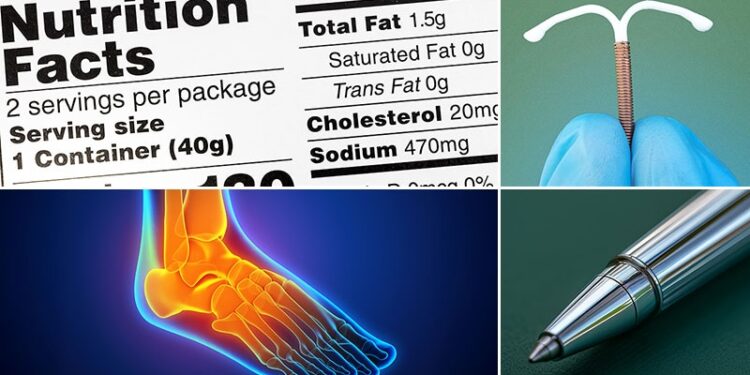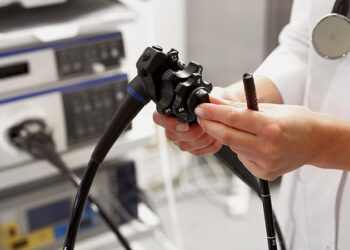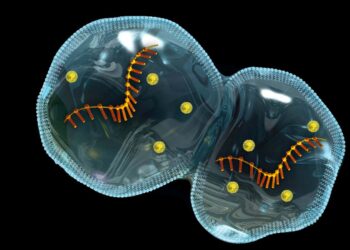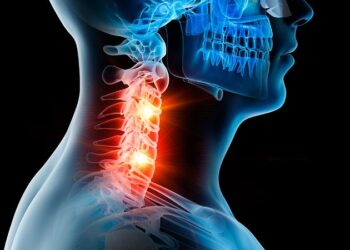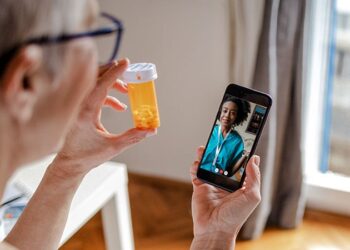Do you have favorite props you use with your patients? Let us and your colleagues know in the comments section.
Here’s a familiar — and stressful — story for physicians and patients alike.
Laura Spurgeon, a 68-year-old retired ophthalmologist’s assistant, had gone in for a routine checkup. “Then it was time for labs, and the labs did not come back so great,” she recalled. The results showed blood sugar issues and high triglycerides, and Spurgeon said her fatigue was constant.
Her doctor, Asha Shajahan, MD, a family physician at Corewell Health in Grosse Pointe, Michigan, was discussing a plan. Could she throw in a little bit of exercise, she asked, proposing light hand weights as a start.
Spurgeon said she did have hand weights at home. “But sadly, they were on my closet floor with dust on them.”

On cue, Shajahan brought out her own set of hand weights during the office visit. “She showed me some exercises I could do at home on a daily basis and said not to push myself because she knows I have a shoulder that’s been bothering me as well,” Spurgeon told Medscape Medical News.
Seeing the demonstration was great encouragement. Sometimes, “You need a jump start,” she said. She and the doctor talked about other strategies during that visit, such as dietary changes to lower cholesterol, but the hands-on demonstration convinced her it was doable. She’s following through.
Like many other physicians, Shajahan is trying to counteract poor patient recall of information and motivate them to change their unhealthy behaviors. She and many of her peers in practice have found simple and usually inexpensive additions to their “black bags” can help on both fronts. Props and other visual aids can help patients remember medical information and motivate them to make changes, according to many clinicians who have tried them, and their patients.
Research: Props, Visual Aids Help
How bad is patient recall of information given orally during a consultation? A team at Brown University evaluated 189 transcripts of outpatient encounters, then interviewed the patients a week later. Only 49% of the decisions and recommendations discussed were recalled without a prompt.
Visual interventions, such as anatomical models or videos, can improve retention, research suggests. As one clinician reported in a 2022 study of visual aids in practice: “Even just having a little visual to have the patient confirm, whether he understood or not, is good. Whether by explanation or a drawing, he should say yes I have really understood, or no I have not understood, so that we can change the technique, in case he did not understand.”
Patients who were about to have knee or shoulder surgery who were shown three-dimensional anatomical models before the procedures reported being more satisfied with their surgeries and with their surgeon’s inter-personal skills than those who were not shown the models. Another study found using anatomical foot models improved patients’ understanding of their conditions, anatomy, and upcoming surgery.
YouTube and Grocery Stores
Shajahan began incorporating props in her office visits about 6 years ago, after she wanted to start light weightlifting herself but was not particularly excited by the prospect. Her cousin sent her a 5-minute YouTube video for arm work. She was soon hooked.
“I felt like once I did it, I thought ‘Oh, I’m sore, this is good, and it’s only 2-lb weights.’”
Not long after that, she found herself recommending weightlifting to a patient who said she didn’t have a gym membership. “I ran and got my phone and said, ‘Let me show you the video I’ve been doing,’’’ Shajahan said. Initially, she used tissue boxes as dumbbells in the office, then brought in her own hand weights for demonstrations.
Shajahan is also an associate professor of medicine at Oakland University William Beaumont School of Medicine in Rochester, Michigan, where she has noticed her residents have had difficulty reading the nutrition labels on foods. If doctors have trouble, she reasoned, patients probably do, too.
So she also has labeled foods in the office and reviews them with her patients. She dispenses quick tips, such as subtracting the fiber content on a label from the carbohydrate content to get a better carb count.
She also leads tours of grocery stores to help patients shop, leading them around the perimeter aisles, which are more likely to include healthier options like fresh produce than the interior section of the market. “Inside the store is where all the junk is,” she tells them.
Calming Presurgery Nerves

Ashim Wadehra, DPM, is a foot and ankle surgeon in Detroit who performs minimally invasive foot surgery, with 3-mm incisions to treat bunions, hammertoes, and other podiatric problems. Patients often do not know what to expect and can be nervous about foot surgery, he said.
Last fall, Wadehra began relying on two simple props — a fine-tipped marker and a foot model — to quell that anxiety, he said. Once he shows patients the tip of the pen, and explains that will be about the size of the incision, many are shocked to see how small the cut will be, he said.
Foot models are also a mainstay for Mohammad Usman, DPM, a podiatrist in Chicago. “A lot of people don’t understand how many bones are in the foot: 26,” he said. With the models, he tells patients, “I am able to show you, ‘this is where you have arthritis’” and other problems.

“By using anatomical models, pressure-mapping tools, and even custom orthotics as visual aids, I’ve found that patients better understand their conditions and are more motivated to follow treatment recommendations,” Usman said.
Exactly How Big Is That Intrauterine Device (IUD)?
When Lauren Green, 35, a registered nurse in Evans, Georgia, chose an IUD for contraception, her doctor, Donna Adams-Pickett, MD, PhD, an obstetrician-gynecologist in nearby Augusta, gave her a demonstration before the procedure.

She showed her the device and the inserter and then walked the mother of two through the process, showing Green how far the device would be inserted in her body and where it should sit.
Even nurses can fear the unknown, Green said, and the in-office demonstration helped squash that anxiety. Like others, she had heard that the insertion of an IUD can be painful. Seeing the dress-rehearsal gave her some much-needed perspective and she realized the device is fairly small.

Adams-Pickett said the IUD demonstration is a must.
“A lot of what is on social media about IUDs is quite scary,” she said. She became adept at explaining medical information by using drawings while she was a college professor, teaching biology and microbiology at George State University before becoming a physician.
Adams-Pickett said she also regularly uses props to talk to teens about puberty — distributing yellow sponge balls, split down the middle, to help girls learn to properly insert a tampon. She sends them home with the props to practice.
Her Lunch Box Is an Open Book
Why lecture patients on what they should eat when you can simply open your lunch box?
That’s the approach of Cardiologist Melissa Tracy, MD, a professor of medicine and medical director for cardiac rehabilitation at Rush University System for Health, in Chicago, who devotes much time to counseling patients on healthful diets.
Tracy takes her lunch to work daily, so instead of a lecture about what to eat, she shows patients —at least those whose appointments are in the morning — what’s on her plate. On a recent day, the menu was half a sandwich on wheat bread: Avocado, cheese, turkey breast, spinach, and arugula. Water and mixed berries with a sprinkling of vanilla and brown sugar rounded out the meal.

For her patients who need to cut down on salt, Tracy keeps a bottle of salt substitute on hand to show them what to buy and how to read the label. As they leave, some take a photo of the bottle so they can pick it up at a market on the way home.
Pain Docs Got Props, Too

Taher Saifullah, MD, a spine and pain management specialist in Los Angeles, keeps a spine model in his office to point out herniated discs, pinched nerves, and arthritis. “When people can see the problem instead of just hearing about it, it clicks. They’re more likely to follow through with treatment when they truly understand what’s going on.”
He also uses a brick to represent a strong spine and a sponge — the spine when people slouch — to encourage good posture, a nerve chart to explain why a pinched nerve in the back can cause tingling in the legs, and a rubber band to show proper stretching technique. “At the end of the day, these props aren’t just about teaching — they’re about helping patients feel in control of their health,” Saifullah said.
Sean Ormond, MD, a pain medicine physician in Glendale, Arizona, tells patients that hydration plays a crucial role in pain management, then demonstrates. “I use a water bottle with measurement markings to visually demonstrate daily hydration goals, supplemented by a chart showing recommended water intake based on body weight,” Ormond said. “This prop serves as a daily reminder to prioritize water intake for better health and pain management.”
A Bag of Sand Explains It
When Ramit Sambyal, MBBS, a general practitioner in Delhi, India, is trying to explain to patients with overweight about the pressure extra weight puts on the knees, he hands them a 5-lb bag of sand to carry. “Patients are surprised by how heavy it feels,” he said.
For heart health, he shows patients a clogged water pipe to demonstrate how cholesterol buildup affects the arteries.

Show and Tell
Could Shajahan, the Detroit physician, have been as effective in motivating change in her patient Laura Spurgeon with sub-optimal lab results, by just telling her to dust off those hand weights at home?
Spurgeon doesn’t think so. The demonstration made the difference “I think it was the hands-on [approach], and the whole idea that, yes, this was easy,” she said. “It wasn’t difficult for me to catch on to say, ‘Hey, this is doable.’” And she recalled the routine easily, too, after the in-office demonstration. And weeks later, she’s still pumping iron.
The sources in this story reported no relevant financial disclosures.
Kathleen Doheny is a Los Angeles freelance journalist.
Source link : https://www.medscape.com/viewarticle/docs-props-visual-aids-and-other-office-objects-help-2025a1000849?src=rss
Author :
Publish date : 2025-04-04 10:52:00
Copyright for syndicated content belongs to the linked Source.

